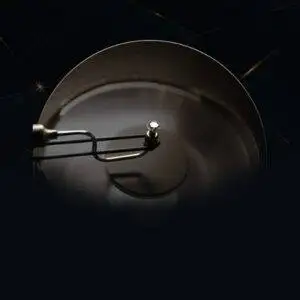Should I Trust a Lab-Grown Diamond Supplier for High-Quality Diamonds?
Lab-grown diamonds have gained immense popularity over the years, not only for their affordability but also for their eco-friendly and ethical production methods. But when it comes to choosing a reliable lab-grown diamond supplier, many buyers find themselves asking: Can I trust the quality of lab-grown diamonds? Let’s dive into this question to understand more about lab-grown diamonds and how to choose the right supplier.
Understanding Lab-Grown Diamonds
A lab-grown diamond is created in a laboratory under conditions that mimic the natural environment where diamonds form. They share the same physical, chemical, and optical properties as mined diamonds, making them a great alternative. What sets them apart is the ethical production process, as no mining is involved, making them a more sustainable option.
When you are considering buying a lab grown diamond, it is essential to know how to choose a trustworthy supplier to ensure you get high-quality stones.
How to Choose a Trustworthy Lab-Grown Diamond Supplier
Choosing a reliable lab-grown diamond supplier requires careful consideration of various factors to guarantee that you’re getting a quality product. Here’s what to look for:
1. Certification and Transparency
A reliable lab-grown diamond supplier should always provide certificates for the diamonds they sell. Look for diamonds that come with certifications from recognized organizations such as the Gemological Institute of America (GIA) or the International Gemological Institute (IGI). Certification ensures that your diamond is of high quality and has been properly graded for its cut, clarity, color, and carat.
Transparency is another vital aspect. Your supplier should clearly provide information about the origin, process, and characteristics of their diamonds. Trustworthy lab grown diamond manufacturers openly share these details with their customers.
2. Expertise in the Field
Another factor to consider is the expertise of the lab grown diamond manufacturers. A well-established manufacturer with years of experience will likely offer superior products compared to a new or inexperienced one. They will also be more knowledgeable about current trends, diamond quality, and grading standards. Experienced manufacturers and suppliers often provide a wide range of diamonds in different shapes, sizes, and qualities, ensuring you have various options to choose from.
3. Ethical and Sustainable Practices
One of the key reasons many people choose lab-grown diamonds is their ethical and environmentally sustainable production. Make sure the supplier you choose adheres to these principles. Reliable wholesale lab Grown diamonds suppliers will highlight the fact that their diamonds are free from conflict and are produced with minimal environmental impact.
4. Customization and Wholesale Options
A good lab-grown diamond supplier should offer customization options to suit your personal preferences. Whether you’re looking for a specific cut or size, the supplier should be able to meet your needs. Additionally, if you’re a jeweller or looking to buy in bulk, ensure that the supplier offers wholesale lab diamonds with competitive pricing and flexible buying options.
Why Lab-Grown Diamonds Are a Popular Choice
Lab-grown diamonds offer several benefits, making them an excellent option for many buyers. Here’s why you might prefer them:
- Affordability: Lab-grown diamonds are typically 30-40% less expensive than mined diamonds, allowing you to get a larger, higher-quality diamond within your budget.
- Eco-Friendly: Unlike mined diamonds, which can lead to environmental degradation, lab-grown diamonds have a minimal carbon footprint and do not involve land displacement or water pollution.
- Ethically Sourced: There’s no risk of buying conflict diamonds when you opt for lab-grown options. These diamonds are 100% conflict-free.
- Identical to Natural Diamonds: Lab-grown diamonds are virtually identical to natural diamonds in every way, except for their origin. They are not “fake” diamonds like cubic zirconia or moissanite.
Conclusion
Trusting a lab-grown diamond supplier for high-quality diamonds is entirely possible if you do your due diligence. By looking for certification, transparency, and sustainable practices, you can ensure that you are purchasing superior lab-grown diamonds that meet your needs and ethical standards. Moreover, lab-grown diamond manufacturers and suppliers with experience in the industry will provide you with a wide selection of stunning, high-quality diamonds.
Should I Trust a Lab-Grown Diamond Supplier for High-Quality Diamonds? Read More »






